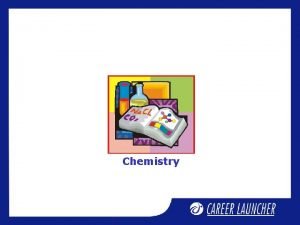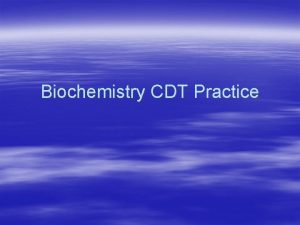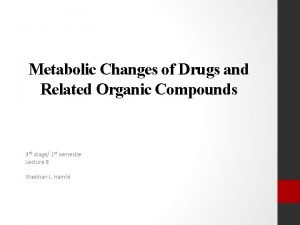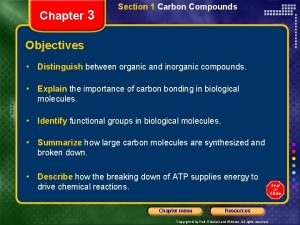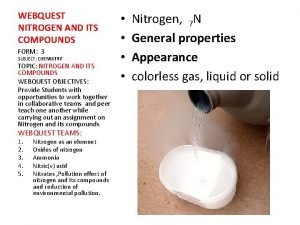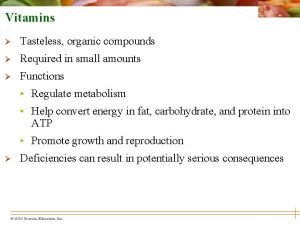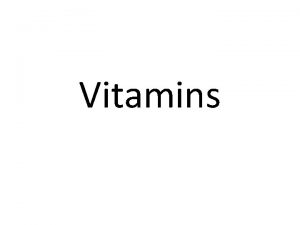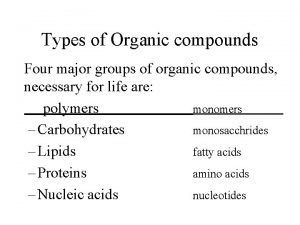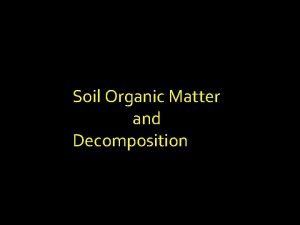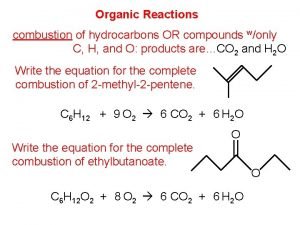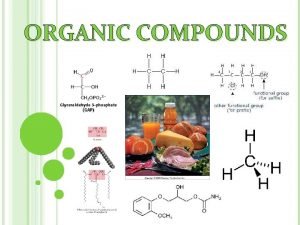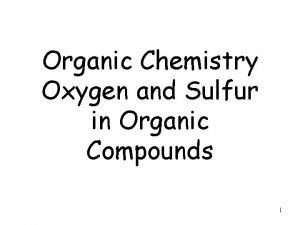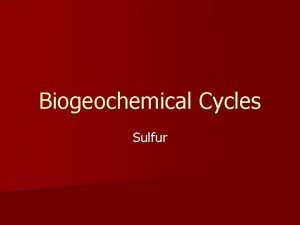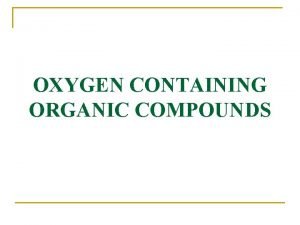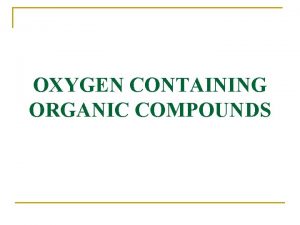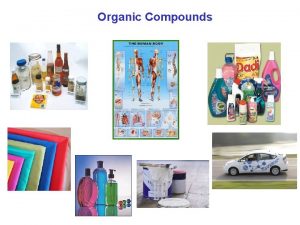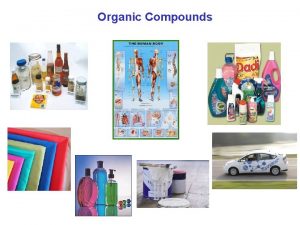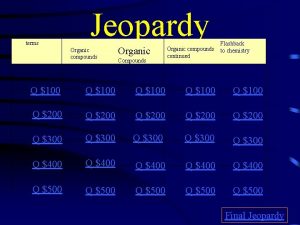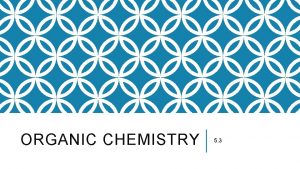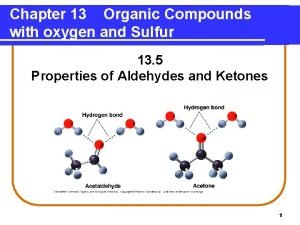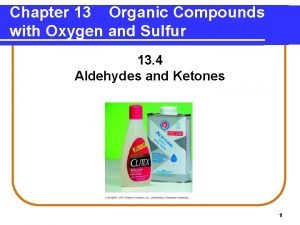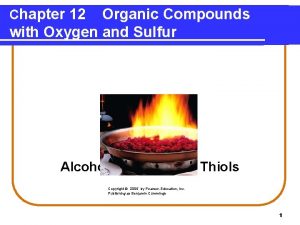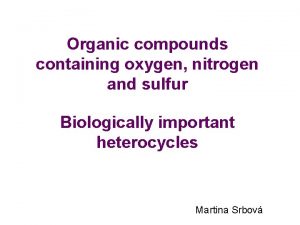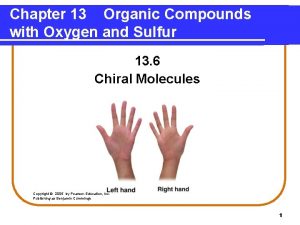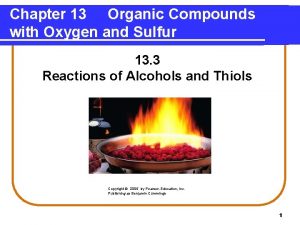Organic Chemistry Oxygen and Sulfur in Organic Compounds
















- Slides: 16

Organic Chemistry Oxygen and Sulfur in Organic Compounds 1

Chapter 12 Part 06 Ethers Page 104 2

1. Ethers - contain the R-O-R functional group - the –OR group is termed alkoxy - derivatives of water where both hydrogens are replaced by R groups H O H R O R Ar O Ar 3

2. Classification - can be symmetrical or unsymmetrical - symmetrical ethers contain R O two identical R groups - unsymmetrical ethers contain R two different R groups R O R’ 4

3. Nomenclature - IUPAC - Determine main chain (longest continuous chain that does NOT contain the –OR group - Identify the remaining short chain as an alkoxy group CH 3 O is methoxy C 2 H 5 O is ethoxy, etc. - Number the chain so the C to which the –OR is attached has the lowest number - Place the name of the alkoxy group in front of the name of the main chain indicate the position of the alkoxy group on the main chain with a number 5

3. Nomenclature - Common - Identify the 2 substituents, either alkyl or aryl, attached to the ether linkage. - Name the substituents alphabetically followed by the word ether - If the ether is symmetrical (2 substituents are the same), the prefix di- is used 6

3. Nomenclature Name the following ethers by either the IUPAC system or the common name. Indicate if it is symmetrical or unsymmetrical. 7

H H H C C C O C C H H H H H C H IUPAC Ethoxypentane Ethylpentyl ether Unsymmetrical 8

H H H C C O C C H H H IUPAC Ethoxyethane Diethyl ether - “ether” Symmetrical 9

H H H C C O C H H H IUPAC Methoxybutane Butylmethyl ether Unsymmetrical 10

H H C C C O H H H IUPAC Propoxycyclopentane Cyclopentylpropyl ether Unsymmetrical 11

O Phenoxybenzene Diphenyl ether Symmetrical 12

Cyclohexylphenyl ether Cyclohexoxy benzene Unsymmetrical O 13

IUPAC methoxy benzene Methylphenyl ether: anisole Unsymmetrical H O C H H 14

4. Properties and Uses - prepared from dehydration of 2 alcohols - colorless, - slightly soluble in water - very soluble in organic solvents - density & boiling points similar to hydrocarbons of similar mass 15

4. Properties and Uses - largely unreactive (stable in acids and bases; resistant to oxidizing and reducing agents) - excellent solvents for chemical reactions - highly flammable - form explosive organic peroxides on standing Diethyl ether and tetrahydrofuran – most widely used organic solvents 16
 Ch3ch2ch2cooch(ch3)2 name
Ch3ch2ch2cooch(ch3)2 name Ib organic chemistry
Ib organic chemistry Inorganic chemistry vs organic chemistry
Inorganic chemistry vs organic chemistry Ionic vs covalent bonding venn diagram
Ionic vs covalent bonding venn diagram Organic and inorganic compounds experiment
Organic and inorganic compounds experiment Purification and characterization of organic compounds
Purification and characterization of organic compounds Organic compounds such as proteins and starches are too
Organic compounds such as proteins and starches are too Metabolic changes of drugs and related organic compounds
Metabolic changes of drugs and related organic compounds All organic compounds contain carbon and ________.
All organic compounds contain carbon and ________. Klb chemistry book 3 nitrogen and its compounds
Klb chemistry book 3 nitrogen and its compounds How are vitamins absorbed
How are vitamins absorbed Vitamins classification chart
Vitamins classification chart The four types of organic compounds
The four types of organic compounds Decomposition of organic matter equation
Decomposition of organic matter equation Combustion of organic substances
Combustion of organic substances Cho cho chon chonp
Cho cho chon chonp All organic compounds must contain the element
All organic compounds must contain the element





